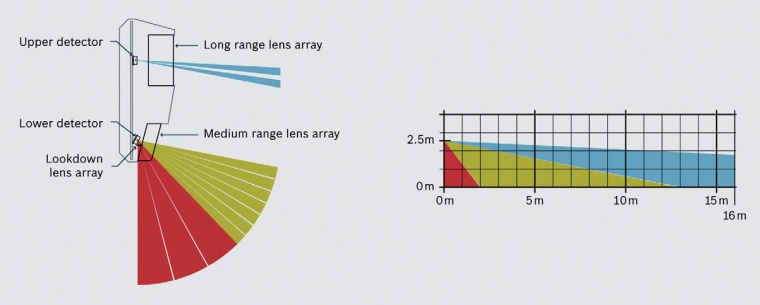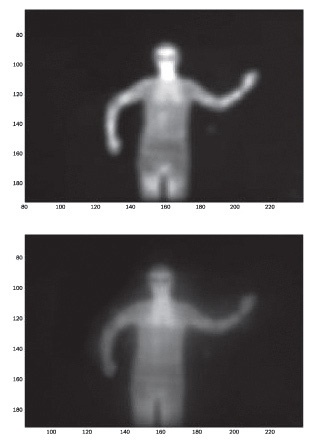Bosch: intrusion detector technology in a banking environment
Bosch: intrusion detector technology in a banking environment. Bank customers today want light, airy, open-plan spaces where they can meet bank staff face-to-face to discuss busine...



Bosch: intrusion detector technology in a banking environment. Bank customers today want light, airy, open-plan spaces where they can meet bank staff face-to-face to discuss business. As well as handling money and financial information, banks are also secure storage areas for deeds, bonds, company books, records and other items of value such as jewelry and artwork. Customers often have access to the large open spaces and small offices in which secure documents and valuables are present. Prevention of tampering with the security system then becomes more difficult.
Criminal acts have become more sophisticated in this open environment. The preferred method is to gain access to financial information such as bank account details, passwords and other transactions. Success depends on the thief getting the information without the banks knowledge. Banks may use elaborate software to protect data, files and financial information in the virtual world, but in the real world they need to protect their detailed hard copy records.
An increasingly common practice is the holding of art exhibitions in the bank. While visitors are free to browse around the bank looking at the valuable exhibits on display, the opportunities for criminals unfortunately increase. One method used by criminals is to mask the intruder detectors and then hide away in the bank, intending to emerge after the bank is locked-up.
Intruder detectors are vulnerable to attack by many methods. A piece of card in front of the device or a quick spray of paint across the detector will make most conventional intruder detectors useless when the alarm comes on after the close of business.
Five Are Better than One
The Bosch Professional series intrusion detector’s fusion of five different sensors in one device is designed to meet the needs of today’s banks. It is an intrusion detector with high reliability – that is, the capacity to detect an intruder while ignoring false alarms - and anti-mask technology to resist sabotage by potential criminals.
The five sensors are analyzed using a sophisticated set of algorithms; the signals from two passive infra-red(PIR) detectors with trifocus optics, a microwave Doppler radar, a white light detector and a high ambient temperature detector are integrated to give consistent, reliable, intruder detection.
The patented optics system uses two separate PIR detectors and three engineered lenses, giving even coverage at short, medium and long range and wall-to-wall detection. Some detectors use mirrors for focusing instead of which, when focused on the middle of a room will leave foreground and background fuzzy. The proprietary Bosch lens design delivers even signal distribution across large spaces and equally in meeting rooms and offices.
Two Legs or Four
While radar will detect the presence and movement of an intruder in a room, it has difficulty deciding the size and lacks depth perception. A rat scuttling across the floor 5 meters away can give the same signal return as a human at 15 meters. Microwave range-adaptive radar technology simultaneously integrates information from both PIR detectors with the radar return. Automatic target range adjustments then determine size in a similar way to the human eye.
Modern banks have large areas of glass to let in the light and suggest an airy sense of space. At night, car headlamps, lightning flashes and street lights though the windows can activate an alarm. All PIR detectors therefore need to be immune to extraneous white light sources, sometimes shone intentionally by potential intruders, that might flood a detector and generate a false alarm. The Professional series uses a dedicated white light sensor integrated with the other signals to neutralize the presence of any white light sources.
Another source of false alarms is high room temperatures from weather or excessive heating. As the ambient temperature approaches human body temperature, the usable signal produced decreases so common practice is to make IR detectors more sensitive at higher ambient temperatures or switch-off the IR part. Bosch uses dynamic temperature compensation to adjust sensitivity around a defined critical range. As human body and room temperatures converge, sensitivity increases in a narrow band, enabling the detection of subtle temperature differences at higher temperatures.
Ocean, Take a Lesson
Intruder detectors used in public bank areas are vulnerable to tampering. During office hours, with the alarm system disabled, criminals have the opportunity to spray paint or other substances on the lenses, or place objects in front of detectors, making them unusable without anyone being aware. Anti-mask detection technology defeats these attempts by using four active IR emitters and three IR sensors.
Bounce back technology creates a bubble of infrared energy about 30 cm in front of the detector. If an object covers the detector, the IR energy rises above expected levels. Any substance sprayed on the outside will alter the multi-prismatic light pipe‘s reflectivity.
Likewise, through-the-lens technology can determine if anyone has placed IR opaque material across the front of the detector. Any rise or fall in expected IR energy on a photodiode will cause the detector to set a trouble signal. With these new combined technologies, the prize-winning Professional series meets both EN50131 Grade 3 and VdS Class C requirements for anti-mask performance. They also meet the European standard for motion detector performance, EN50131-2 on catch performance and false alarm immunity and anti-mask detection capability.
CNPP (France) independently test the Professional series detectors by type for a given application security risk to grade level 2 and 3, the high-risk application category.
Bosch Professional series intrusion detectors have won three prestigious prizes; the Intruder Alarm Product of the Year Award at the IFSEC Exhibition 2008, selection for inclusion in the ‘Gallery of New Products’ at the SICUR Exhibition 2008 and the best innovative solution in security and safety technologies at the XIVth International Forum & Exhibition on Security and Safety Technologies at the Crocus Expo in Moscow.ct
Contact:
Bosch GmbH,
Ottobrunn, Germany
Tel.: +49 89 6290 1647
Fax: +49 89 6290 281647
emea.securitysystems@bosch.com
www.boschsecurity.com
most read

Integrated and Futureproof: Traka’s Next Chapter
Interview with Stefni Oliver on Traka’s Vision for the Future

Is Your Venue Ready for Martyn’s Law?
Martyn’s Law demands stronger security by 2027. Is your venue prepared to protect and respond?


GIT SECURITY AWARD 2026 - The winners have been announced!
GIT SECURITY AWARD 2026: The best safety and security solutions of the year - now an overview of all winners

The Benefits of AI-based Video Surveillance Solutions for Sports Venues
Dallmeier Interview: Artificial intelligence Makes Stadiums Smarter







